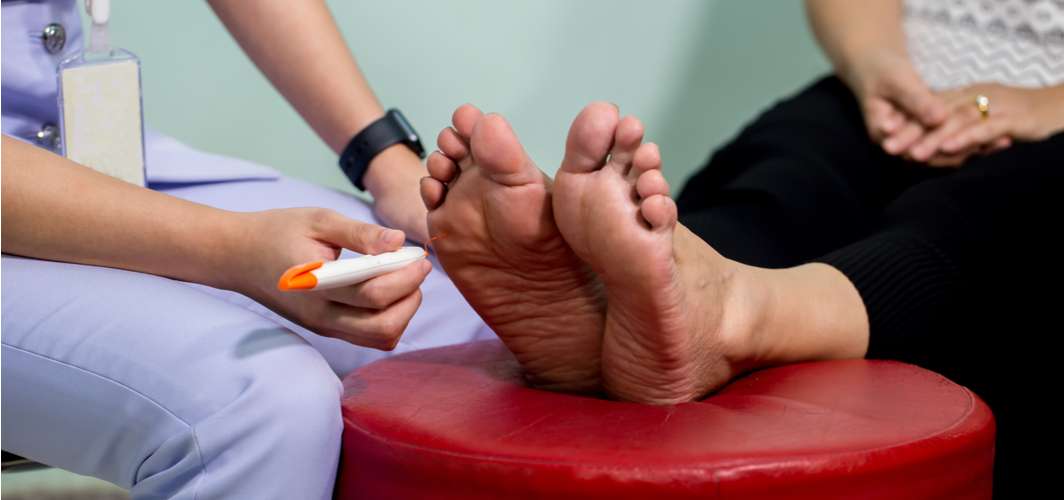Diabetes Management
Understanding Reactive Hypoglycemia: Causes, Symptoms, Prevention, and Treatment
2 min read
By Apollo 24|7, Published on - 01 August 2024
Share this article
0
0 like
.jpg?tr=q-80)
Reactive hypoglycemia is a health condition characterised by low blood sugar levels after eating, typically surfacing within two to four hours post-meal. This condition can manifest in individuals with or without diabetes and is often linked to excessive insulin release following carbohydrate-rich meals. Let's delve deeper into what causes this condition, the common symptoms, and how it can be prevented and managed effectively
Causes of Reactive Hypoglycaemia
While the exact cause of reactive hypoglycaemia remains unclear, several factors could play a part:
- Overproduction of Insulin: Consuming large, carbohydrate-rich meals might trigger an excessive insulin release, leading to a blood sugar drop.
- Underlying Medical Conditions: Prediabetes, hormonal disorders, or rare enzyme deficiencies could influence insulin regulation.
- Post-Surgical Impact: Certain gastric surgeries may alter food processing in the digestive system, increasing the risk of hypoglycaemia.
- Other Factors: Alcohol consumption, specific tumour types, and metabolic diseases may also contribute to its occurrence.
Signs of Reactive Hypoglycaemia
Symptoms typically appear within 2-4 hours post-meal and may include anxiety, confusion, dizziness, irritability, light-headedness, sweating, and extreme tiredness. Recognising these symptoms can help individuals seek timely medical attention.
Preventing and Treating Reactive Hypoglycaemia
Prevention Strategies
The key to preventing reactive hypoglycaemia lies in dietary and lifestyle changes:
- Small, Frequent Meals: Consuming smaller meals every three hours can help maintain stable blood sugar levels.
- Balanced Diet: Including a variety of foods in your diet while avoiding high-sugar and refined carbohydrates can be beneficial.
- Mindful Alcohol Consumption: If consuming alcohol, ensure you eat along to prevent blood sugar dips.
- Regular Exercise: Staying active can aid blood sugar regulation.
Treatment Options
Generally, reactive hypoglycaemia may not need medical treatment. However, in case of severe symptoms or underlying conditions, a doctor might recommend dietary modifications and medical evaluations.
Joining a comprehensive diabetes management programme like the Apollo Super 6 could be beneficial. This programme, designed by the expert doctors at Apollo, focuses on diet improvement, physical activity increment, and provides continuous support for managing diabetes more effectively.
Diabetes Management
Consult Top Diabetologists
View AllLeave Comment
Recommended for you

Diabetes Management
How To Prevent Diabetes During Pregancy?
Risk factors like family history, obesity, and lifestyle choices can help prevent gestational diabetes. A balanced diet with complex carbs, proteins, and good fats, avoiding sugary snacks and processed foods, is crucial. Safe exercise like walking, yoga, swimming promotes well-being. Regular prenatal check-ups, glucose tests, stress reduction aid in prevention, ensuring a healthy pregnancy.
.jpg?tr=q-80)
Diabetes Management
Empowering Athletes with Diabetes: Strategies for Optimal Performance
Athletes with diabetes can optimise their performance by combining effective nutrition, insulin management, and diabetes education. Balancing carbohydrate intake, adjusting meal timing, staying hydrated, and monitoring blood glucose levels are vital steps towards better performance. Stay ahead in your game by learning how to manage diabetes effectively with the Apollo Super 6 programme.

Diabetes Management
Diabetic Foot: Can it be Prevented?
The development of diabetic foot can be prevented through various measures. Effective prevention includes regular foot care, such as daily inspection and cleaning, wearing comfortable and proper-fitting shoes, managing blood sugar levels, controlling blood pressure and cholesterol, maintaining a healthy lifestyle, avoiding smoking and alcohol consumption, and seeking immediate medical attention for any foot issues.
Subscribe
Sign up for our free Health Library Daily Newsletter
Get doctor-approved health tips, news, and more.
Visual Stories

8 Fruits That are Incredibly Healthy for Diabetes
Tap to continue exploring
Recommended for you

Diabetes Management
How To Prevent Diabetes During Pregancy?
Risk factors like family history, obesity, and lifestyle choices can help prevent gestational diabetes. A balanced diet with complex carbs, proteins, and good fats, avoiding sugary snacks and processed foods, is crucial. Safe exercise like walking, yoga, swimming promotes well-being. Regular prenatal check-ups, glucose tests, stress reduction aid in prevention, ensuring a healthy pregnancy.
.jpg?tr=q-80)
Diabetes Management
Empowering Athletes with Diabetes: Strategies for Optimal Performance
Athletes with diabetes can optimise their performance by combining effective nutrition, insulin management, and diabetes education. Balancing carbohydrate intake, adjusting meal timing, staying hydrated, and monitoring blood glucose levels are vital steps towards better performance. Stay ahead in your game by learning how to manage diabetes effectively with the Apollo Super 6 programme.

Diabetes Management
Diabetic Foot: Can it be Prevented?
The development of diabetic foot can be prevented through various measures. Effective prevention includes regular foot care, such as daily inspection and cleaning, wearing comfortable and proper-fitting shoes, managing blood sugar levels, controlling blood pressure and cholesterol, maintaining a healthy lifestyle, avoiding smoking and alcohol consumption, and seeking immediate medical attention for any foot issues.

